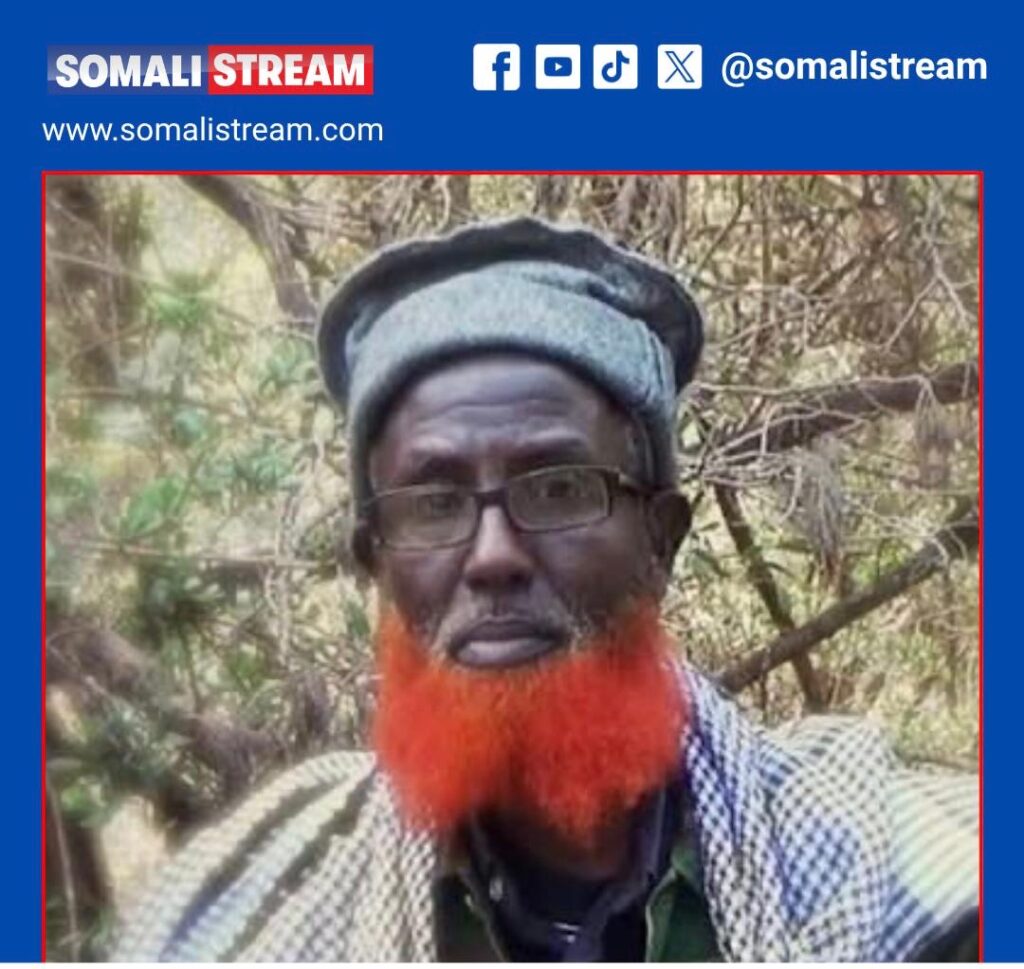By Mustafa Osman Farah
The origins of IS-Somalia lie in a schism within the Al-Qaeda-aligned Al-Shabaab in 2015. The group was founded by Sheikh Abdiqadir Mumin, a highly prominent emir and Islamic scholar who previously resided in Britain. Mumin signaled the organization’s inception by publicly announcing his oath of allegiance (Bay’ah) to then-Islamic State leader Abu Bakr al-Baghdadi in October 2015. This marked the culmination of a period of careful preparation by ISIS to establish a foothold in Somalia. A small number of followers joined Mumin in this defection, forming what would become Wilayat al-Sumal. The United States acknowledged the emerging threat, designating Mumin as a Specially Designated Global Terrorist (SDGT) in August 2016.
The defection immediately triggered a violent and decisive response from Al-Shabaab. The rivalry between the two groups is fundamentally hostile. AS successfully engaged the fledgling IS-Somalia forces in battle, crushing most of the new group’s supporters. This sustained early conflict served to contain IS-Somalia, effectively blocking its expansion into the more lucrative and densely populated central and southern regions of Somalia where Al-Shabaab maintains strong territorial control. The intensity of this rivalry forced IS-Somalia to seek a distinct, geographically isolated niche for survival.
Formal Allegiance and ISIS Recognition
Despite Mumin’s initial pledge in 2015, the Islamic State central command delayed formal recognition of Wilayat al-Sumal until December 2017. This two-year gap indicates that ISIS leadership was cautiously assessing the group’s durability and unique strategic value before granting it official Wilayat status. This delay highlights IS-Somalia’s initial weakness and the effectiveness of Al-Shabaab’s containment efforts during this foundational period.
Following recognition, IS-Somalia heightened its global posture. In late 2017, IS-Somalia issued propaganda promoting attacks against Western states and actively soliciting recruitment from Muslims, particularly in East Africa. This propaganda push aligned with the formal recognition and contributed to the U.S. State Department’s subsequent designation of IS-Somalia as a Foreign Terrorist Organization (FTO) in February 2018.
The group has maintained its fidelity to the core organization, demonstrating continued institutional commitment by re-pledging allegiance to the new Islamic State leader, Sheikh Abu-al-Hassan al-Hashimi al-Qurashi, in March 2022.
Geographic Footprint and Operational Domains
To understand IS-Somalia’s current posture, it is essential to situate its activities within Somalia’s varied geographic and political landscape.
Northern Safe Haven: The Golis Mountains (Bari Region, Puntland)
IS-Somalia’s principal stronghold is located in the rugged Golis Mountains in the Bari region of Puntland, a semi-autonomous area in northern Somalia. This mountainous terrain – remote, defensible, and historically difficult for state forces to fully control – has become critical to the group’s survival. Puntland, which has maintained its own government since 1998, is relatively stable compared to southern Somalia, but its political dynamics remain complex. These conditions provide IS-Somalia with both refuge and room to manoeuvre.
Urban and Coastal Reach: Bosaso and Qandala
While its core military presence is anchored in the Golis Mountains, IS-Somalia relies heavily on nearby urban and coastal centers for financial sustainability. Key among these is Bosaso, the largest city and a major port in Puntland. Bosaso serves as a crucial economic hub where IS-Somalia reportedly exploits extortion schemes and leverages infiltration within certain local structures to generate revenue.
Additionally, the group’s reported operational basis near the port town of Qandala underscores the strategic value of coastal access. Control over or proximity to these coastal routes likely facilitates logistical movements and illicit trading activities essential to maintaining IS-Somalia’s limited but resilient operations.
National-Level Constraints: Instability and Security Fragmentation
The longevity of IS-Somalia, despite its small geographic footprint, is directly enabled by Somalia’s broader political instability. Counter-terrorism efforts remain incoherent and often ineffective due to limited coordination and mutual mistrust between the Federal Government of Somalia (FGS) and Puntland authorities. This disjointed security environment continues to create gaps that IS-Somalia exploits to preserve its presence.
Mustafa Osman Farah is Security Researcher, Balqiis Insights.


